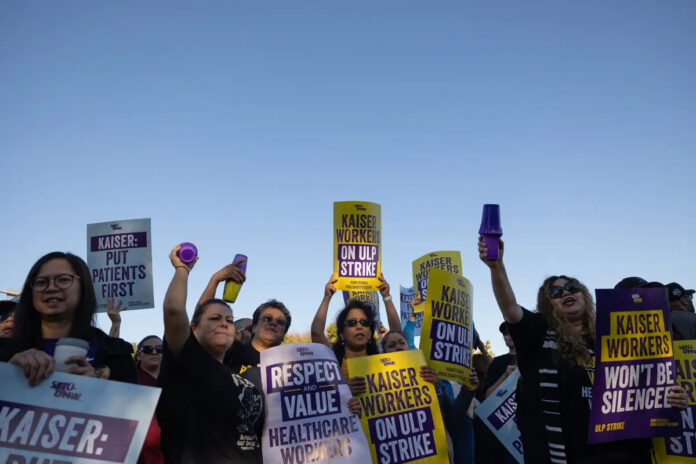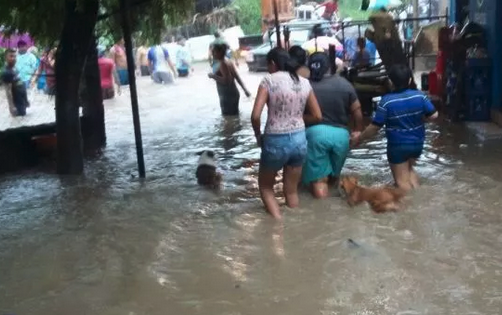It’s a terrible shame that Washington is controlled by bloody-minded ghouls who never cease advocating and inciting terrible wars that never achieve anything apart from enriching the Military-Industrial Complex
by John Leake
Just over a quarter of a century ago, George Kennan – the chief architect of the U.S. Cold War policy – published an opinion in the New York Times about the folly of expanding NATO up to Russia’s borders.
Based on elementary “balance of power” principles, he perceived that expanding a military alliance (with accompanying military installations) all the way to Russia would result in precisely the instability – and ultimately the war – that the proponents of the policy proclaimed they wished to prevent.
Everyone knows the U.S. government would never tolerate a Russian military alliance with accompanying military installations anywhere the western hemisphere, never mind right on the U.S. mainland’s border. Since the 19th century, the U.S. government hasn’t tolerated ANY military alliances with European powers anywhere near the territory of the United States.
In 1917, German Foreign Secretary Arthur Zimmerman sent an encrypted telegram to the Mexican government in which he proposed a military alliance against the United States. The British navy intercepted and decrypted it, and when it was published in the American press, it immediately swayed public opinion in favor of joining the war against Germany.
In 1962, when Soviet missile installations were discovered in Cuba, a major crisis ensued between the Kennedy and Khrushchev governments and was only defused when the Kennedy administration agreed to remove U.S. Jupiter missiles from Turkey.
Thus, for many years I have wondered why anyone in their right mind would believe that Russia – a country invaded by France in 1812 and Germany in 1941, with catastrophic consequences for its people – would tolerate the U.S. government, intelligence agencies, and NATO setting up shop in Ukraine?
Since December of 2022, I’ve heard nothing but nonsense and humbug from U.S. government officials about the conflict between Ukraine and Russia. Instead of encouraging Ukraine to settle its differences with Russia through negotiations and compromise, the U.S. government has encouraged a terribly destructive war that has gotten hundreds of thousands of young Ukrainian men killed.
Anyone who has studied military history for a few hours could easily recognize that launching a counter-offensive into Russia’s defensive positions in eastern Ukraine would NOT work.
The strategy of pressing Ukrainian forces into Russian artillery batteries was scarcely better than the Union assault on Marye’s Heights at the Battle of Fredericksburg in 1862. During that perfectly futile Union offensive, a Confederate battery commander remarked that if given enough shot and powder, he could kill every man north of the Rappahannock if Union officers kept sending them.
U.S., European officials broach topic of peace negotiations with Ukraine, sources say. The conversations have included very broad outlines of what Ukraine might need to give up to reach a deal with Russia.
This was imminently predictable. Since the Ukrainian-Russian crisis entered its final stage (before war) almost two years ago, I have perceived that the Ukrainian government would eventually have to negotiate with the Russians, and should therefore do it before getting hundreds of thousands killed.
It’s a terrible shame that Washington is controlled by bloody-minded ghouls who never cease advocating and inciting terrible wars that never achieve anything apart from enriching the Military-Industrial Complex.
Scarcely two months had elapsed after the calamitous end of the 20-year Afghanistan debacle before the same gang of Neocon knuckleheads started clamoring for a showdown with Russia in Ukraine.
I doubt that any of Washington’s hawks care at all about ordinary Ukrainians. Hillary Clinton expressly stated that supporting war in Ukraine would result in Russia getting bogged down in that country, just as it had gotten bogged down in Afghanistan (aided by the U.S. arming mujahideen like Osama bin Laden).
Other congressmen and policy wonks have made similar statements about the benefits of waging a proxy war in Ukraine – that is, it’s a great way to kill Russians and hurt Russia without having to use American soldiers to do it, and it’s great for the U.S. armaments industry. Obviously they didn’t care at all about the Ukrainians.
The lesson is clear: U.S. foreign policy wonks are stupid and wanton. Most of them have never had a single shot fired at them and have no idea about the terrible reality of war.
Much the same can be said for American people who insisted that negotiating with Russia was anathema. Like cheering the newest football team in the league, they indulged in the brutally sentimental fantasy that it was better for other people to get killed instead of seeking a negotiated settlement. Their understanding of war is akin to a pornography consumer’s understanding of sex – that is, self-indulgent and completely detached from reality.
Reprinted with permission from Courageous Discourse.








